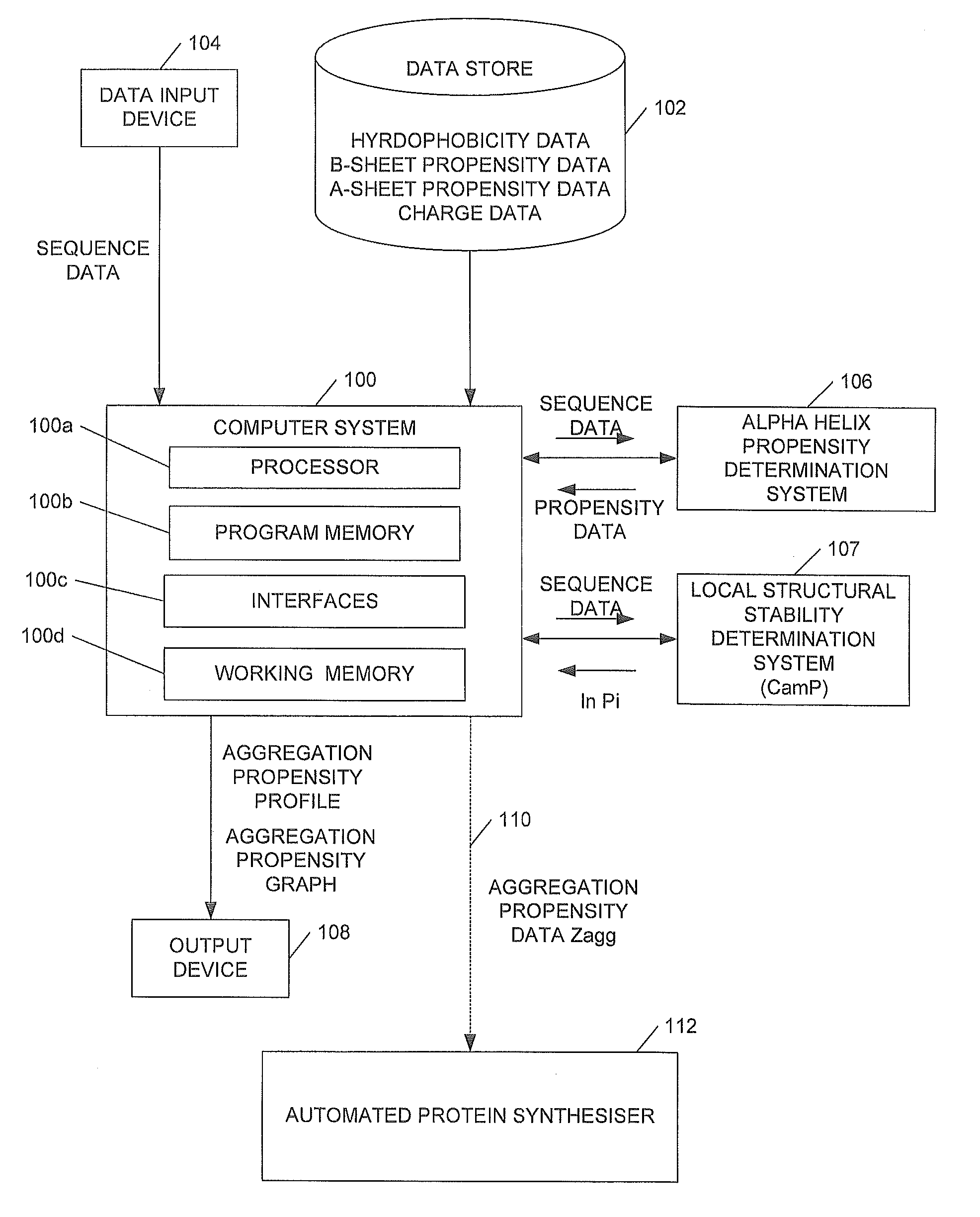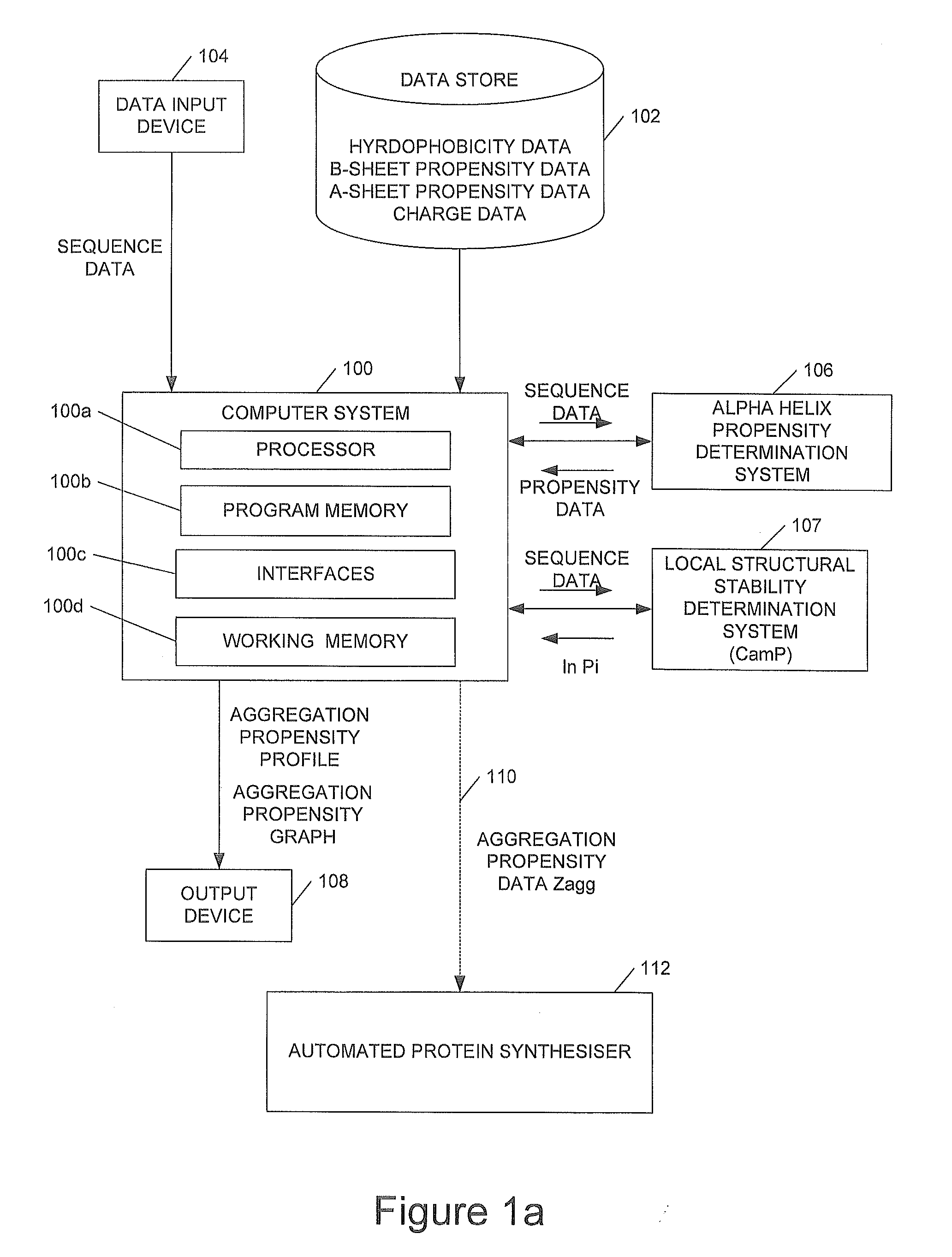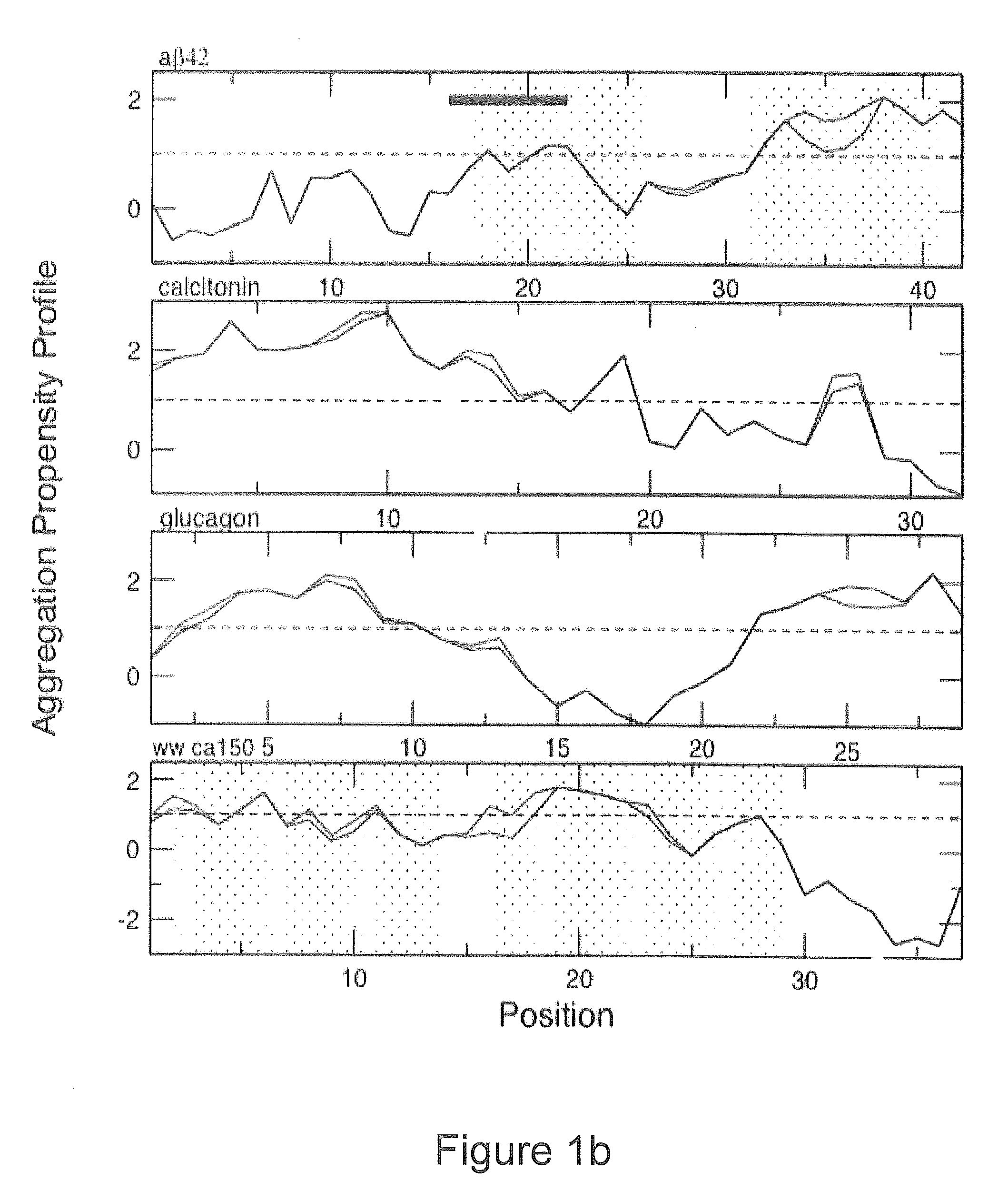Protein aggregation prediction systems
a prediction system and protein technology, applied in the field of protein aggregation prediction systems, can solve the problems of difficult problems, inaccurate prediction, and general application of the prediction of aggregation in structured (folded) proteins
- Summary
- Abstract
- Description
- Claims
- Application Information
AI Technical Summary
Benefits of technology
Problems solved by technology
Method used
Image
Examples
Embodiment Construction
[0024]We will describe a method of predicting the regions of the sequences of peptides and proteins that are most important in promoting their aggregation and amyloid formation. The method allows such predictions to be carried out for conditions under which the molecules concerned can contain a significant degree of persistent structure. In order to achieve this result embodiments of the method use only a knowledge of the sequence of amino acids to estimate simultaneously both the propensity for folding and for aggregation, as well as the way in which these two types of propensity compete. We illustrate the approach by its application to a set of peptides and proteins both associated and not associated with disease. The results show not only that the regions of a protein with a high intrinsic aggregation propensity can be identified in a robust manner, but also that the structural context of such regions in the monomeric (soluble) form is very important for determining their role in...
PUM
 Login to View More
Login to View More Abstract
Description
Claims
Application Information
 Login to View More
Login to View More - R&D
- Intellectual Property
- Life Sciences
- Materials
- Tech Scout
- Unparalleled Data Quality
- Higher Quality Content
- 60% Fewer Hallucinations
Browse by: Latest US Patents, China's latest patents, Technical Efficacy Thesaurus, Application Domain, Technology Topic, Popular Technical Reports.
© 2025 PatSnap. All rights reserved.Legal|Privacy policy|Modern Slavery Act Transparency Statement|Sitemap|About US| Contact US: help@patsnap.com



